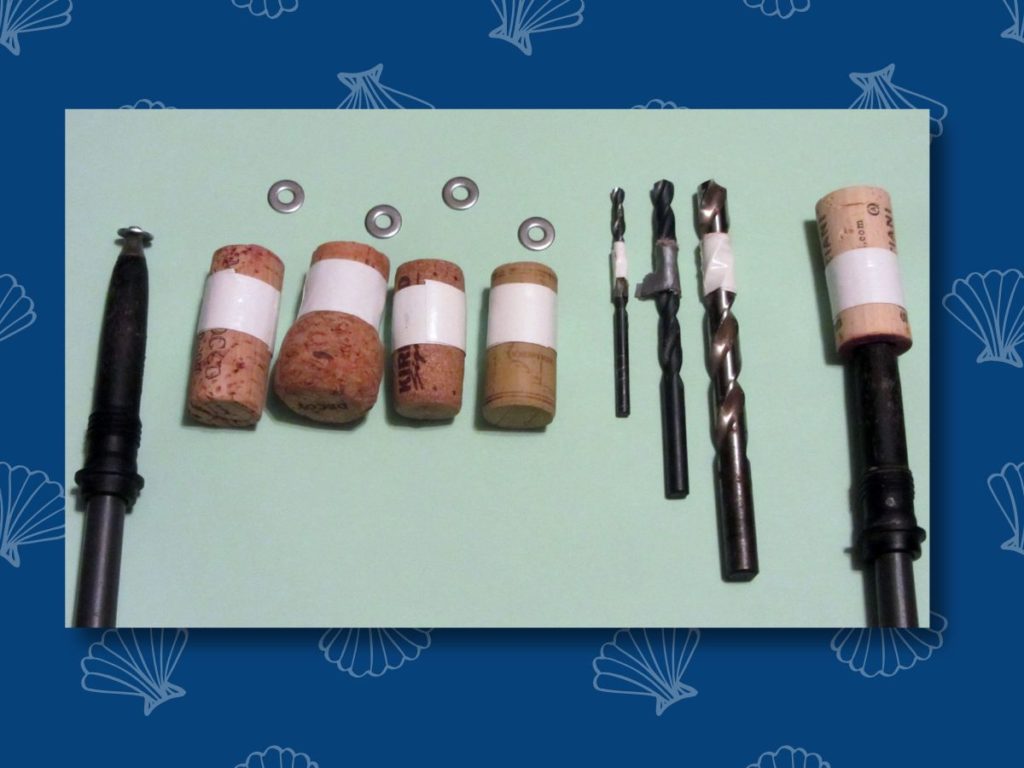Perfect Pairing: Replacing Trekking Poles Tips with Wine Corks


Perfect Pairing: Replacing Trekking Poles Tips with Wine Corks
by Bryan Winter | San Francisco, CA
Most of my walking this year has been on concrete. I’ve noticed that rubber trekking pole tips do not last long and cost upwards of $2 a pair. I read a blog that mentioned using wine corks as an alternative. I thought that cork would be a sustainable alternative for rubber and wondered about their longevity. I decided to fabricate and test them while preparing for my next Camino.
Supplies needed:
- Corks (natural wood, agglomerate, synthetic, or Aglica)
- Size 8 washer (harvested from the trekking pole’s old tips)
- Drill
- Drill bits (1/8” and 1/4” for pilot holes; 3/8” for finishing)
- Electrical tape
- Trekking pole(s)
Assembly instructions:
- Drill the wine-exposed end of the cork.
- Drill a 1/8” pilot hole to a depth of 0.75”.
- Enlarge the hole with another pilot bit 1/4”.
- Finish with a 3/8” bit to a depth of 0.75” (the depth of a rubber tip is 1.25”).
- Remove debris from hole.
- Holding the trekking pole “tip upward”, place a size 8 washer (harvested from your old tip) on the “tip upward” trekking pole.
- Push the cork onto the tip, thus inserting the washer into the cork.
- Twist the cork and remove it from the tip.
- Use electrical tape to tape around the cork where the washer has been placed. (This gives support for the tip and marks corks with inserted washers).
Tips for selecting corks:
- When selecting corks, newer are preferable to older
- There are four types of cork you could use:
- Natural wood: harvested from cork oak trees (graded 1-3)
- Agglomerate: ground cork (from natural wood cork press debris and old wood corks) glued together
- Synthetic: man-made material, not cork
- Aglica: Agglomerate (ground cork) and synthetic, combined
- Corks rated best to worst for a trekking pole tip:
- Champagne: fine grain agglomerate, very dense; harder to drill
- Synthetic, agglomerate, Aglica: about the same
- Natural wood: not optimal, due to grain and flaws.
Tips about the tips:
- Reuse the washer and electrical tape from the used cork tip for your next cork tip.
- The cork tips seem to last 50 to 100 miles on asphalt and concrete.
- Remove tips when trekking on soft material: dirt, sand, mud, and gravel; put them in your pocket until you return to hardtop.
Villagers and city dwellers will thank you for using cork or rubber tips when passing through their town. I call it stealth trekking.


